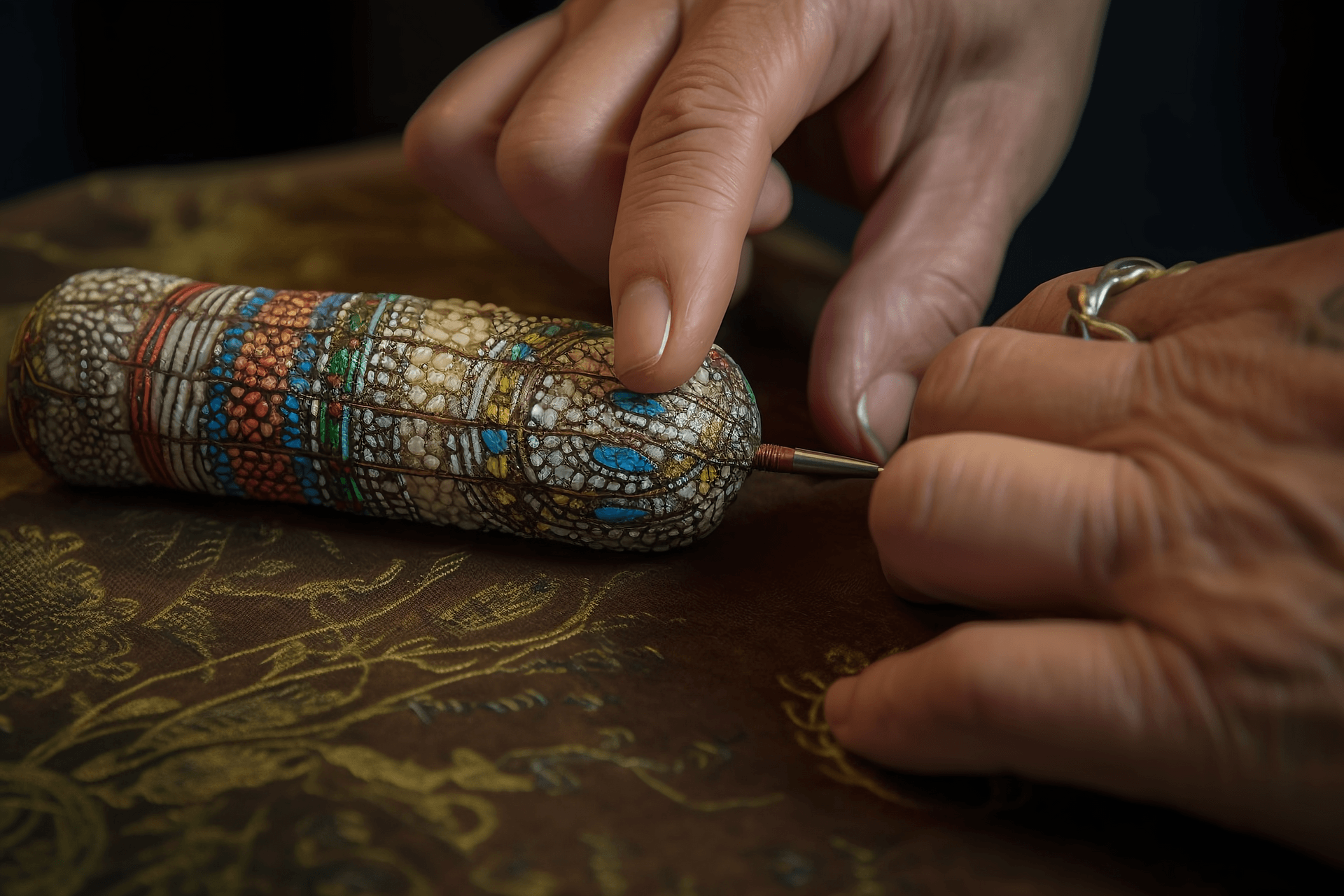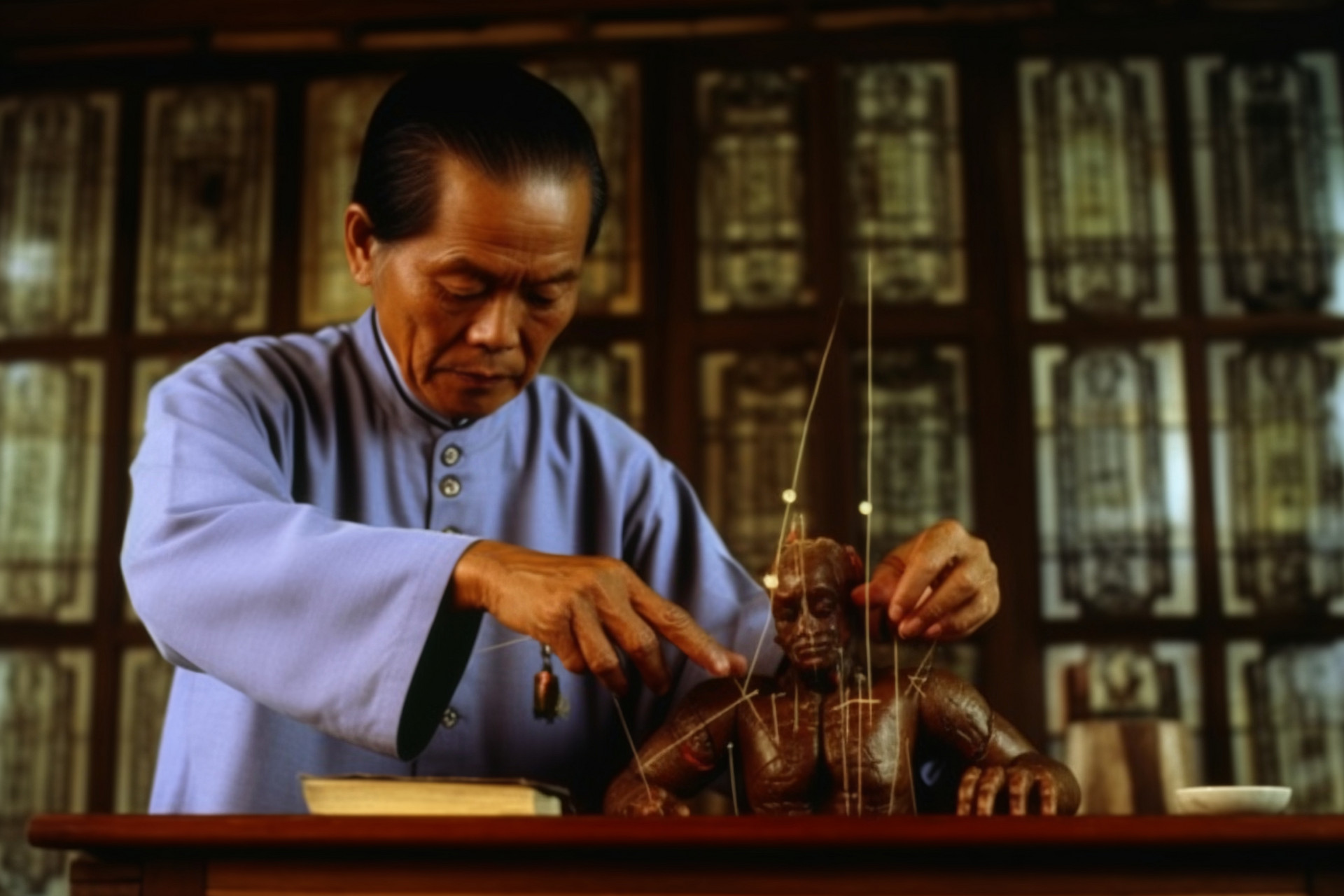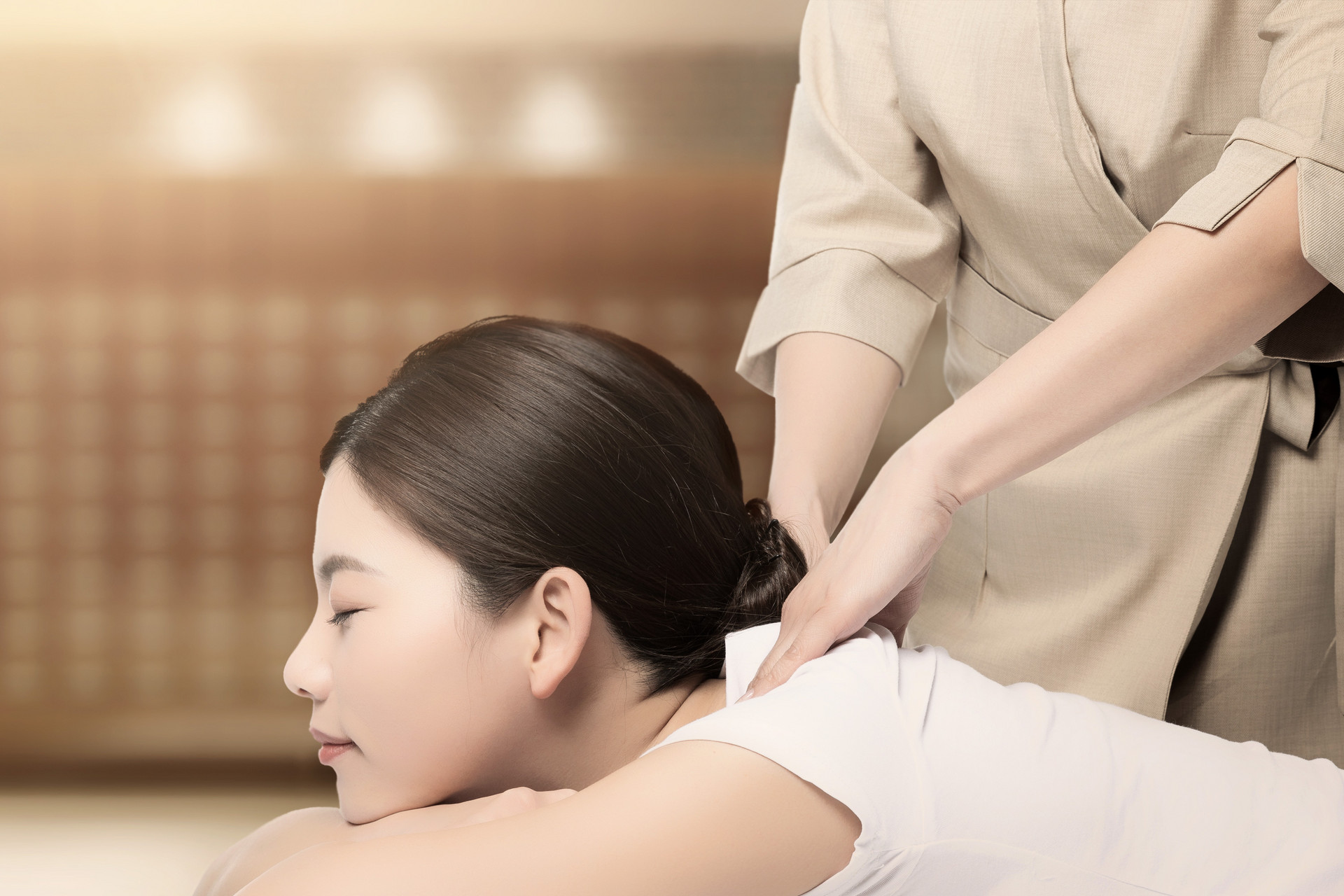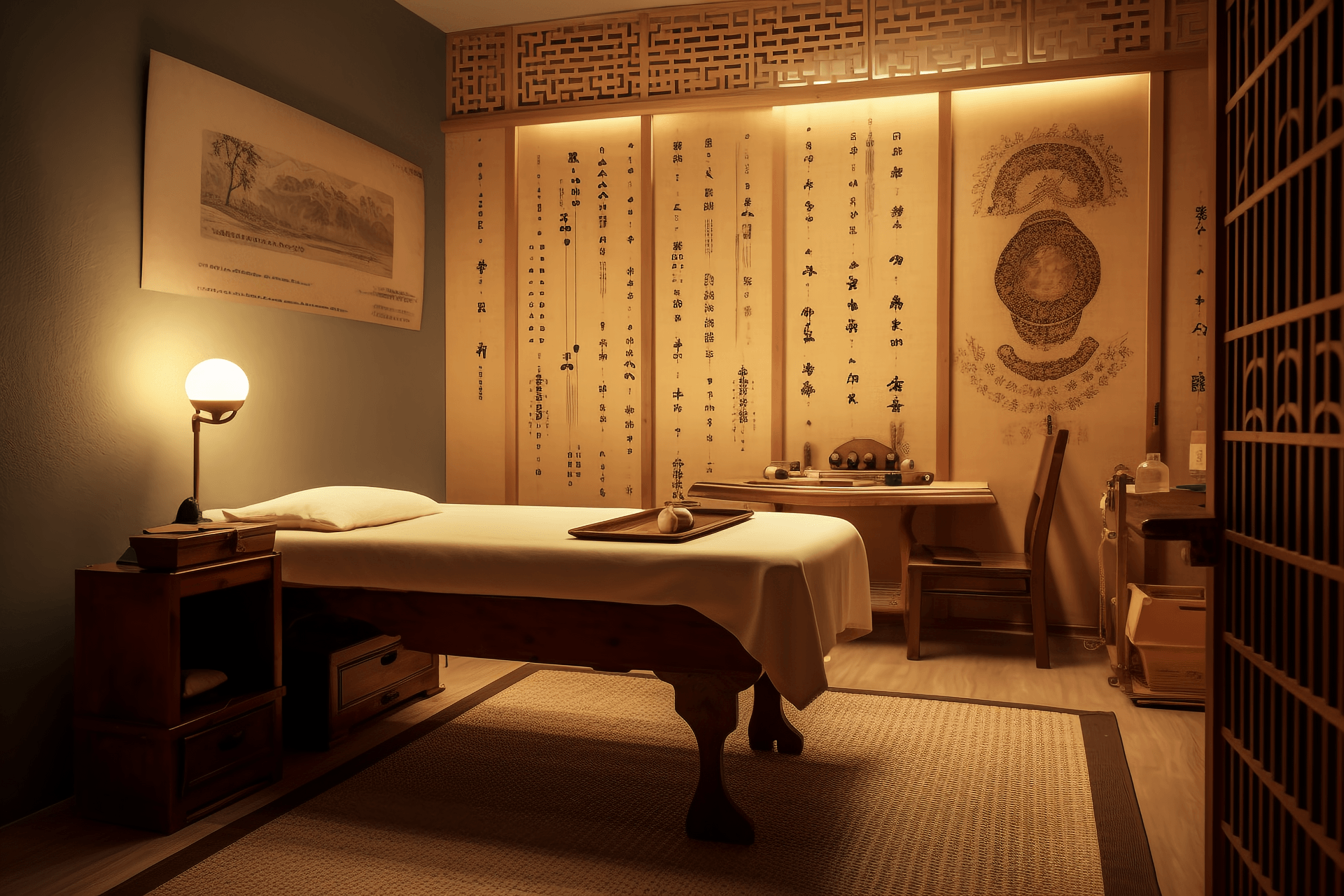【Operation Method】
1. Hand Line Drawing
Hand line drawing is the basis for hand needle positioning. In order to accurately locate and facilitate acupuncture treatment, the hand is divided into the following 11 positioning lines based on certain physiological landmarks.
1. Yin and Yang line: The line drawn along the middle of the red and white meat at the radial and ulnar sides of the hand, which is the boundary line between the palm and the back of the hand. The palm of the hand is yin, and the back of the hand is yang. The area at the yin and yang line is the yin-yang surface.
2. Palmar Line I: On the radial side of the palm. From the midpoint of the tip of the 1st finger, through the phalanx and metacarpal bone, it stops at the intersection point of 1/6 on the radial side and 5/6 on the ulnar side of the wrist crease.
3. Palmar Line II: On the slightly radial side of the palm. From the midpoint of the tip of the 2nd finger, through the phalanx and metacarpal bone, it stops at the intersection point of 1/3 on the radial side and 2/3 on the ulnar side of the wrist crease.
4. Palmar Line III: In the middle of the palm. From the midpoint of the tip of the 3rd finger, through the phalanx and metacarpal bone, it stops at the midpoint of the wrist crease.
5. Palmar Line IV: On the slightly ulnar side of the palm. From the midpoint of the tip of the 4th finger, through the phalanx and metacarpal bone, it stops at the intersection point of 2/3 on the radial side and 1/3 on the ulnar side of the wrist crease.
6. Palmar Line V: On the ulnar side of the palm. From the midpoint of the tip of the 5th finger, through the phalanx and metacarpal bone, it stops at the intersection point of 5/6 on the radial side and 1/6 on the ulnar side of the wrist crease.
7. Dorsal Line I: On the radial side of the back of the hand, opposite to Palmar Line I.
8. Dorsal Line II: On the slightly radial side of the back of the hand, opposite to Palmar Line II.
9. Dorsal Line III: In the middle of the back of the hand, opposite to Palmar Line III.
10. Dorsal Line IV: On the slightly ulnar side of the back of the hand, opposite to Palmar Line IV.
11. Dorsal Line V: On the ulnar side of the back of the hand, opposite to Palmar Line V.
2. Naming of Acupoint Areas
There are 3 human body projections on the hand:
First, there is a human body projection on the back of the hand above the middle finger, facing the fingertip direction. We name it the "Hand Prone Image" acupoint area. The corresponding area on the palm side is called the "Hand Prone Organ" acupoint area.
Second and third, there are two human body projections on the back of the hand, facing towards the heart. Because their images are opposite to the distribution direction of the "Hand Prone Image", they are called the "Hand Inverted Image" acupoint area. The corresponding area on the palmar side is called the "Hand Inverted Organ" acupoint area. Among these two acupoint areas, one is located on the radial side of the hand and is named the "Radial Inverted Image" and "Radial Inverted Organ"; the other is located on the ulnar side of the hand and is named the "Ulnar Inverted Image" and "Ulnar Inverted Organ".
3. Localization of Acupoint Areas
As mentioned above, the hand image needle acupoint area is mainly composed of Hand Prone Image, Hand Prone Organ, Radial Inverted Image, Radial Inverted Organ, Ulnar Inverted Image, and Ulnar Inverted Organ. The detailed localization of each part is as follows.
1. Hand Prone Image is the overall projection of the human body, distributed on the back of the hand above each metacarpal bone.
In the left hand: On the ulnar side of the back of the hand along Dorsal Line IV, it represents the left half of the body in the Hand Prone Image acupoint area system. On the radial side, it represents the right half of the body.
In the right hand: On the ulnar side of the back of the hand along Dorsal Line IV, it represents the right half of the body in the Hand Prone Image acupoint area system. On the radial side, it represents the left half of the body.
(1) Head and Neck: Located on the back of the 3rd finger at each joint. From the fingertip to the 3rd metacarpophalangeal joint, it represents the projection of the top of the head, back of the head, and neck. The center of the top of the head follows the middle of Dorsal Line IV and is symmetrically distributed on both sides.
(2) Trunk: On the back of the 3rd metacarpal bone, it represents the trunk of the body and is symmetrically distributed along Dorsal Line IV. The metacarpophalangeal joint corresponds to the junction of the cervical and thoracic vertebrae (acupoint Da Zhui), and the wrist joint corresponds to the sacrum (acupoint Chang Qiang). The trunk is divided into three sections, with the back accounting for about 3/7 of the total length, the waist accounting for 2/7, and the hip accounting for 2/7.
(3) Upper Limbs: The distribution of the left and right upper limbs on both hands is basically the same. However, the left and right upper limbs represented by the Hand Prone Image on both hands are opposite but coincide.
Left Upper Limb: On the left hand, it is the area of the 4th finger; on the right hand, it is the area of the 2nd finger.
Right Upper Limb: On the left hand, it is the area of the 2nd finger; on the right hand, it is the area of the 4th finger.
The metacarpophalangeal joint between the 1st and 2nd fingers corresponds to the shoulder; the joint between the 1st and 2nd fingers corresponds to the elbow; the joint between the 2nd and 3rd fingers corresponds to the wrist.
The tip of the 2nd and 4th fingers represents the fingers.
(4) Lower Limbs: The left and right lower limbs represented by the Hand Prone Image on both hands cross each other and overlap.
Left Lower Limb: On the left hand, it is the area of the 5th finger; on the right hand, it is the area of the 1st finger.
Right Lower Limb: On the left hand, it is the area of the 1st finger; on the right hand, it is the area of the 5th finger, symmetrically distributed along Dorsal Lines I and V on the back of the hand.
1. Hip: It is located at the metacarpophalangeal joints of the 1st and 5th fingers. The joint between the 1st and 2nd phalanges of the thumb corresponds to the knee, and the joint between the 2nd and 3rd phalanges corresponds to the ankle. However, the thumb has two phalanges, and the 2nd phalanx is not obvious, so the ankle is located at the nail of the thumb.
| 1 2 3 > >> >>|











